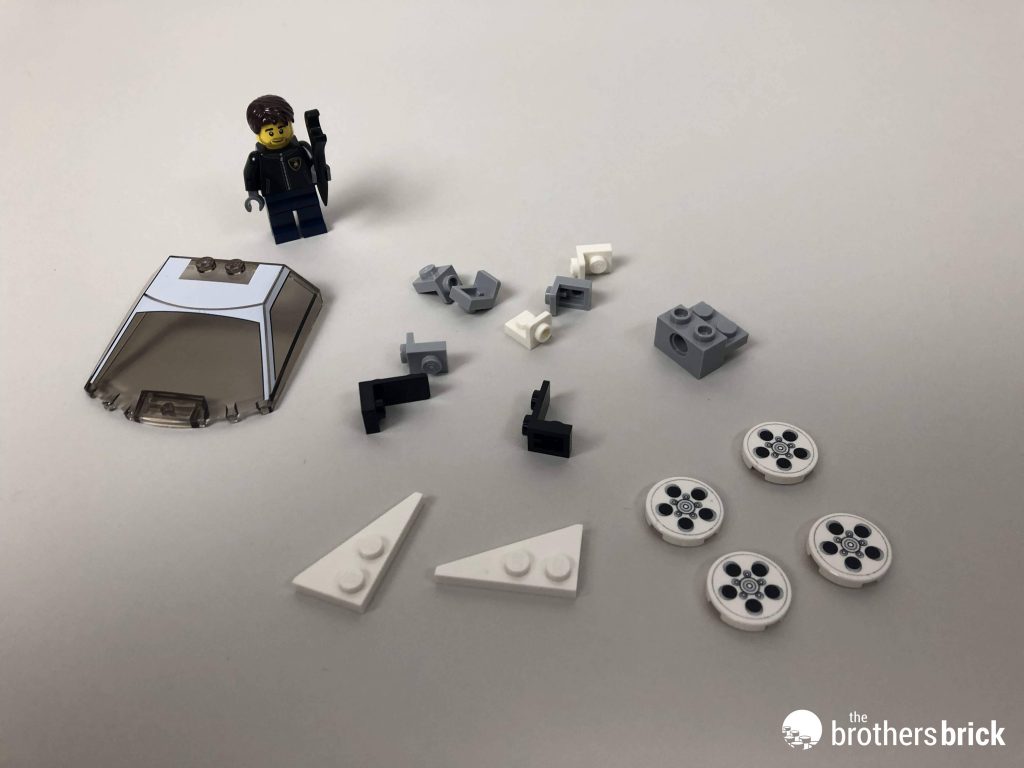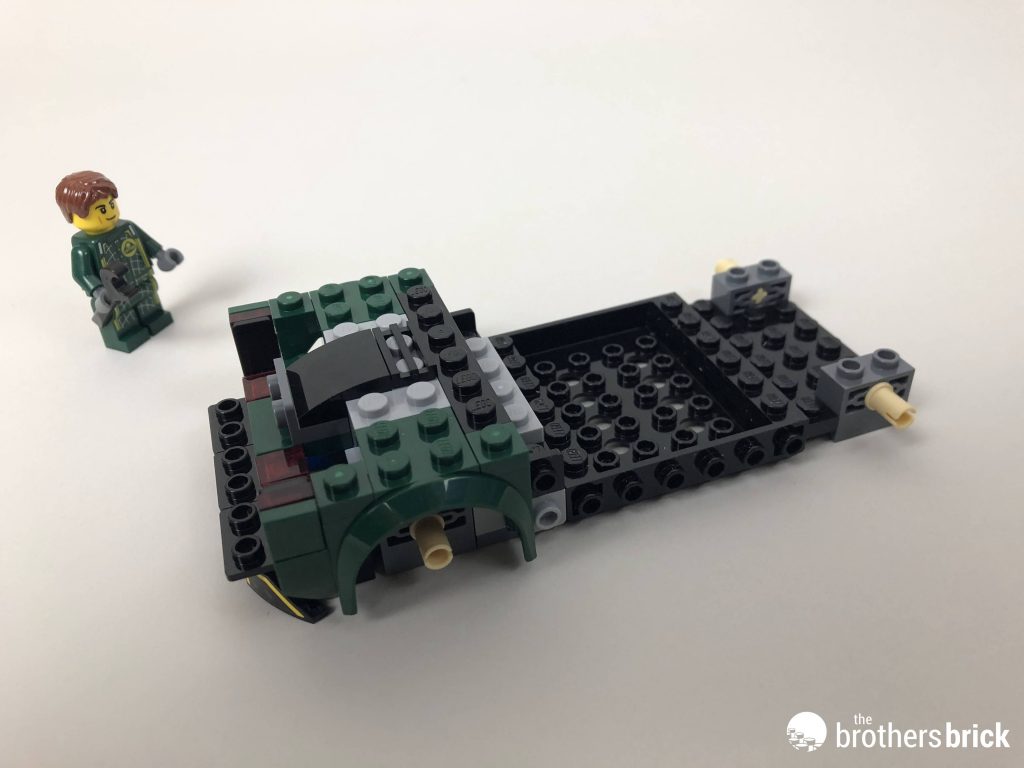When the Speed Champions theme first launched in 2015, it was clearly targeted at younger builders, but over the years, the construction techniques, attention to detail, and the inclusion of some very popular racing car brands have steered the theme to a more adult audience (pun intended). The quality of the finished models is definitely shelf-worthy. LEGO has announced the latest wave of sets featuring brands like Ferrari, Lamborghini, Mercedes, Lotus, and Aston Martin. We got our hands on the entire wave, and we’re revving up to take a look at three of them. LEGO 76906 Ferrari 512 M, 76907 Lotus Evija, and 76908 Lamborghini Countach. These three Speed Champions sets and more will be available on March 1, 2022. 76906 Ferrari 512M includes 291 pieces and will retail for US $19.99 | CAN $24.99 | UK £17.99, 76907 Lotus Evija includes 247 pieces and will retail for US $19.99 | CAN $24.99 | UK £17.99, and 76908 Lamborghini Countach includes 262 pieces and will retail for US $19.99 | CAN $24.99 | UK £17.99.
The LEGO Group provided The Brothers Brick with an early copy of this set for review. Providing TBB with products for review guarantees neither coverage nor positive reviews.
Unboxing the parts, instructions, and sticker sheets
The boxes follow the standard template for the theme, featuring the vehicle on a photo-realistic background with motion blurs to give a sense of speed on the front. The upper right corner of each box includes the logo of the manufacturer, while the upper left corner sports the Speed Champions logo over a black and white checkered flag.
On the backs of the boxes, the cars are shown on different backgrounds from the rear, and in a close-up, along with a photo of the physical car. The manufacturer’s logo is featured in the top right corner as well.
Inside each of the boxes are 2 numbered bags, an instruction booklet, and a sticker sheet. The Lotus Evija also includes a separate hubcap kit and modified plate loose in the box. The Lamborghini includes the same modified plate used for the structure of the car, but it comes in one of the bags.
Each set also includes a printed windshield canopy and a variety of interesting parts, some with printed details instead of stickers. All sets include both a racing helmet and a hairpiece for the drivers. For the Ferrari, there are the new 1×2 slopes in red, a bunch of dark gray 1×3 jumper plates with 2 studs, 1×2 transparent black tiles printed with red and metallic gray candles used for the exhaust pipes. The Lotus includes a printed shield piece in transparent black, some tall 1×1 brackets, the 1×1 brick with a Technic axle hole, and 2 new 2×3 sloped parts with printed headlights. The Lamborghini includes a variety of brackets, a pair of pointed wedge plates, and 2×2 round tiles with printed hubcaps.
Ferrari 512M
Starting in set number order with the 1970 Ferrari 512M, which, unlike the other two cars, has a brick-built core instead of the 6-stud wide modified plate. It does use the usual 6-stud wide plate with built-in axle bricks on each side for the wheels to attach to. Right away we get an interesting bit, with two espresso handles sticking through a 1×2 rounded plate.

From here we continue to build up the core structure without too many surprises. There are a few interesting parts that get completely covered up, like several white 1×2 rounded plates with hollow studs due to the economic technique of not including any more unique parts than needed, like adding a normal 1×2 plate when they already have a similar part allocated to the set that will not be seen in the finished model.
As the build progresses we start to the iconic look emerging along the rear of the car. We also get the first of many small and hard-to-place stickers, including one that goes along the angled front edge of a 1×2 white slope. The two red sloped parts are used to create the curve in front of the rear wheels.
Next, we attach the sides of the driver’s compartment, which include a few more stickers, a bit easier to place this time. The front fenders are added as well. The front headlights are built sideways using a collection of tall brackets and they are attached to an upside-down modified plate with a clip on one end.
The canopy (the same one used for many spaceship cockpits attaches at the front. The model is finished with an angled section for the hood and includes a neat little intake vent. The gold wheels don’t include any additional hubcaps.
Just for fun, I decided to build one of the cars from the first wave for comparison. At only 6 studs wide, and with a fraction of the part count, it almost looks like something from the Juniors 4+ line compared with the wider, longer, and much more detailed Ferrari. It is clear to see just how much this theme has evolved over the years.

Lotus Evija
The Evija uses one of the 6-stud wide modified plates for the core structure. The early build has no surprises, with most of the parts forming the somewhat chunky rear section. One neat detail was how using two angled bow slopes on the corner creates a nice transition.
The next part starts to get interesting, with Technic pins used to attach a few angled slopes which frame the printed rear windscreen.
With the back section completed, it’s time to move on to the front, which starts with a somewhat elaborate drivers compartment. After building the two side sections and the front wheel wells we get another interesting attachment technique for the front section, which uses small ball and socket joints to attach the main section upside down.
The Evija finishes with the headlight-printed angled slopes, and a sleek hood including intake vents. Hubcaps and the printed front windshield round out the finished model.
Once again including the original Speed Champions set for comparison, we can see how much more detailed and accurate the theme sets have become.

Lamborghini Countach
And now we come to my favorite car from this wave, the sleek and smooth Lamborghini Countach. The build starts with the core, again using the 6-stud modified plate for the base. The low profile of the Countach is achieved with cheese slopes angled up. There is a small vent just behind the door, and hinges attached at a shallow angle add another vent and small window.
We continue to sculpt the iconic car with sideways wall plates that cover the gap above the side windows. Then we move to the rear of the car, where upside-down sloped pieces frame transparent red cones used for the taillights.
A short Technic assembly on either side allows a long gently-curved rear panel to fit perfectly with the section right behind the driver’s area. These sections also include the forward-facing intake vents visible from the front of the car. The engine cover includes stickers for the cooling vents, and the rear spoiler attaches using black Minifig handles.
Next up are the interior details, and the front wheel wells. There are stickers for the swiveling headlight panels, and a pair of espresso handles are used to attach the front section below the headlights.
The last part of the hood is attached with hinge bricks to allow the whole thing to gently angle down to rest on the front section.

Finally, we add the printed windshield and hubcaps and this aerodynamic bad boy is ready for the race.

Comparing this car to the original almost makes the other car look like Duplo. To be fair, even the first Speed Champions sets had good details and interesting building techniques, but they took a lot less time to build. Each one of these cars took more time than I expected and included some unexpected techniques that I will be using in my own MOCs.

The finished models
Each of the finished cars is full of great details and does a fantastic job of capturing the look of their real-world counterparts.

Conclusions and recommendations
I have always found the Speed Champions sets to be a great value for the price, and a good source for many of the new parts introduced each year by LEGO, and this wave is no exception. Whether you are a fan of any of these race cars, or just like to get ahold of cool new parts in a variety of colors, I can easily recommend these sets. They make awesome displays and are fun to build.
These three Speed Champions sets and more will be available on March 1, 2022. 76906 Ferrari 512M includes 291 pieces and will retail for US $19.99 | CAN $24.99 | UK £17.99
76907 Lotus Evija includes 247 pieces and will retail for US $19.99 | CAN $24.99 | UK £17.99, and 76908 Lamborghini Countach includes 262 pieces and will retail for US $19.99 | CAN $24.99 | UK £17.99.
The LEGO Group provided The Brothers Brick with an early copy of this set for review. Providing TBB with products for review guarantees neither coverage nor positive reviews.









































































































Please! Ferrari, not Ferarri!
Three absolutely superb editions. I’ve bought the McLaren Senna & previously, the P1 models, but the Countach is a major player. Its been slated for the canopy being a “faded” shade of white, but still a good looker. The 512M is probably the closest looking representative of the trio, but I’d be happy with either of them!!